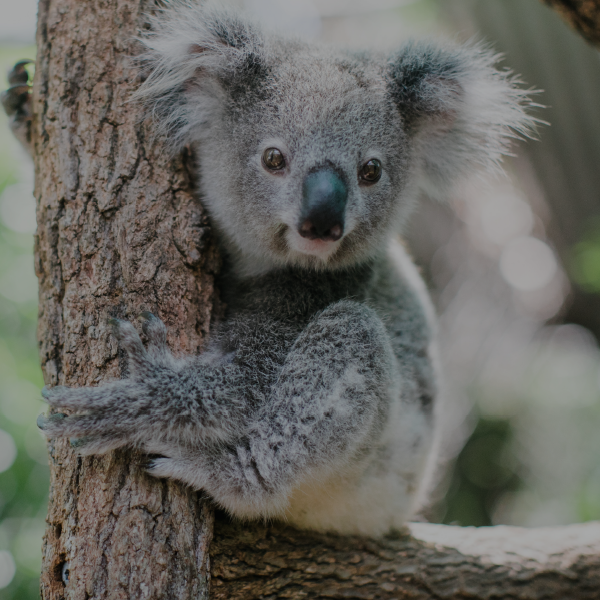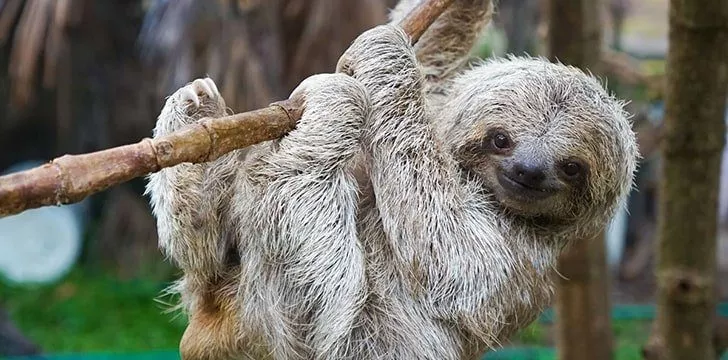Along the way, the science fiction stories I'd been writing since I was 13 began to grow more believable. With my BS in biology and a fascination with genetics, I started to use more science in my fiction.
After reading hard SF for the past 50 years, and writing hard SF successfully for the past 20, I've started to dig deeper into what it takes to create realistic alien life forms. In the following series, I'll be sharing some of what I've learned. I've had some of those stories published, some not...I teach a class to GT young people every summer called ALIEN WORLDS. I've learned a lot preparing for that class for the past 25 years...so...I have the opportunity to share with you what I've learned thus far. Take what you can use, leave the rest. Let me know what YOU'VE learned. Without further ado...
You know what a koala is, don’t you? It’s an Australian animal that, while it resembles a small bear, it’s not. In fact, it’s entirely a vegetarian, eating ONLY eucalyptus leaves, while true bears are omnivores.
You know what a tree sloth is, don’t you? It’s a small bear-like animal that lives in Central and northern South America. While it resembles a bear, it’s not. It is also a vegetarian, but it eats MORE than just eucalyptus leaves.
So, two similar animals, they even have similar – but not exactly the same – environments.
I’m going to give them events and creatures that will force them to adapt as Humans had to adapt what they could find in their environment, see if they end up differently or pretty much identical…
Similarities: both are slow-moving (other differences are obvious, but I'm going to play off this one...)
Differences:
Koalas: Predators: goannas, dingoes, powerful owls, wedge-tailed eagles, and pythons – mostly dangerous to young koalas; marsupial; eat primarily eucalyptus leaves; smaller, “simpler” brain; they defend themselves using their extremely large claws and lashing out; good hearing and they have good vision; NOT a community creature; with two sets of vocal cords (one for mating purposes), one for everyday use, they make grunting and whistling sounds; they walk on ground only when changing trees, and then they are slow – unless they are startled, then they can sprint up to 30 km/h…
Tree sloths: Predators: harpy eagles, ocelots, and jaguars; placental; they have large claws and lash out; poor vision and hearing; wiry muscles, they cannot walk well on the ground; interact with a large bacterial and arthropod communities; NOT a community creature; they make sounds that have been described as “Humans who haven’t learned to talk yet”; they can barely walk, but are extraordinarily good swimmers…
All right, I’ve got enough here to initially develop two societies that might come about if koalas and tree sloths faced environmental challenges that DID NOT wipe them out.
Koala Civilization
As their usual predators increased, the koalas learned to use their heavy claws to fight off the mostly flying predators. Rolling over on their backs in a burst of speed, they learned to rake with their claws as the birds dove at them. They also became “attack huggers”, when a python attacked, they rolled and clasped, counter squeezing the python until their claws touched skin; then they suddenly raked their claws in opposite directions, sectioning the reptile. The claws were also useful for harvesting branches in order to build more permanent shelters that were used to stay safe from the flyers. The society would then, when a python was discovered nearby while on their slow meanderings for food, gather to create a trap but building it as they did the shelters. A young male or female would then volunteer to act as bait. This initially worked so well at reducing the python population, that an inventive koala built a large, basket/nest higher in the trees. A young one would volunteer to give their lives (or was accused of a crime and tied as a penalty), and the birds were killed when they were trapped.
Koala civilization was cooperative, though typically moved slowly. However, some members developed longer and longer sprinting abilities and as they became a specialized caste of runners, koala societies were able to spread out. Maintaining eucalyptus trees was accidental at first as like their sloth-neighbors did, they went to ground to expel solid waste. One smart koala learned to drop a seed in the waste, then return to the spot, nurturing the growing eucalyptus tree. These clusters grew and eventually extended for hectares.
Others learned to not only cut the branches but weave them together for structures and eventually capture water from the infrequent rains.
Sloth Civilization
Koala civilization was cooperative, though typically moved slowly. However, some members developed longer and longer sprinting abilities and as they became a specialized caste of runners, koala societies were able to spread out. Maintaining eucalyptus trees was accidental at first as like their sloth-neighbors did, they went to ground to expel solid waste. One smart koala learned to drop a seed in the waste, then return to the spot, nurturing the growing eucalyptus tree. These clusters grew and eventually extended for hectares.
Others learned to not only cut the branches but weave them together for structures and eventually capture water from the infrequent rains.
Sloth Civilization
Though they initially couldn’t see well, they learned to use their claws with greater precision. While sloths do NOT have great vision, they began to rely on their tongues to “taste” their environment as their young learned what to eat by licking the lips of their mothers. The tongue became the primary organ of sensing, while vision faded and their sense of taste and smell grew. They became adept at tasting and arranging their environment, moving toxic plants to the edges of their dwellings for protection and their foods closer to the center of their territory.
Sloths rarely gather together, mostly during breeding season. Females began to band together, and it was these bandings that led to the growth of Female Villages. While still slow, Sloth youngsters could move fastest and became “sentinels” for protecting the Villages. When they reached sexual maturity, males were chased out to fend for themselves. This led to males forming triads of the strongest, all other males being killed.
While outright combat between the Female Villages and the wandering Triads was rare, the division of Sloth society grew more obvious. In order to protect themselves, the Triads learned to engineer compounds in the trees to keep themselves safe.
The Villages learned something similar. But the problem remained of what to do with their male young. Constantly killing them was wasteful, so they offered them up to the Triads. The Triads, recognizing that they could accomplish more, developed “apprenticeship sites”. The sites morphed as the females sent their males to these Apprentice Homes; and the Triads protected them. Some males – as well as females developed certain skills in weaving branches and doing wood work. (Because they were tree-dwellers, Sloths never really developed metal-working. If they needed something to last, they developed a way of growing plants and weaving flat slate into the pattern. With time, the “slate trees” were as effectively protected as solid rock).
Sloth Swimmers explored the world, sometimes coming into contact with the Koala runners. In time, they formed partnerships, playing off each other’s strengths.
Technology? Hmmm…food for thought. Maybe next time…
Sources: https://www.quantamagazine.org/arik-kershenbaum-on-why-alien-life-may-be-like-life-on-earth-20210318/
Koala: https://friendsofthekoala.org/wp-content/uploads/We-Restore-Habitat.png
Tree sloth: https://www.thefactsite.com/wp-content/uploads/2020/02/sloth-facts.webp
Sloths rarely gather together, mostly during breeding season. Females began to band together, and it was these bandings that led to the growth of Female Villages. While still slow, Sloth youngsters could move fastest and became “sentinels” for protecting the Villages. When they reached sexual maturity, males were chased out to fend for themselves. This led to males forming triads of the strongest, all other males being killed.
While outright combat between the Female Villages and the wandering Triads was rare, the division of Sloth society grew more obvious. In order to protect themselves, the Triads learned to engineer compounds in the trees to keep themselves safe.
The Villages learned something similar. But the problem remained of what to do with their male young. Constantly killing them was wasteful, so they offered them up to the Triads. The Triads, recognizing that they could accomplish more, developed “apprenticeship sites”. The sites morphed as the females sent their males to these Apprentice Homes; and the Triads protected them. Some males – as well as females developed certain skills in weaving branches and doing wood work. (Because they were tree-dwellers, Sloths never really developed metal-working. If they needed something to last, they developed a way of growing plants and weaving flat slate into the pattern. With time, the “slate trees” were as effectively protected as solid rock).
Sloth Swimmers explored the world, sometimes coming into contact with the Koala runners. In time, they formed partnerships, playing off each other’s strengths.
Technology? Hmmm…food for thought. Maybe next time…
Sources: https://www.quantamagazine.org/arik-kershenbaum-on-why-alien-life-may-be-like-life-on-earth-20210318/
Koala: https://friendsofthekoala.org/wp-content/uploads/We-Restore-Habitat.png
Tree sloth: https://www.thefactsite.com/wp-content/uploads/2020/02/sloth-facts.webp




No comments:
Post a Comment